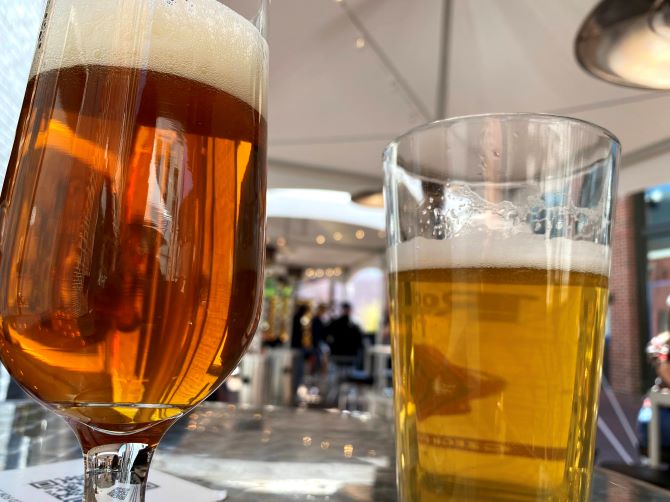
Jeff Alworth wrote about something new he’d like to see develop in 2022: American lager.
He started with a question from Ben Howe at Otherlands Brewing. “(It) feels a bit strange to be making a perfect recreation of a German beer. I wonder what an American lager would look like if we developed a tradition as rich as Franconia’s.”
Alworth has some suggestions, obviously influenced by the concept of “national tradition” he puts forth in the new edition of “The Beer Bible” (if you haven’t bought and read it, you should). It’s no secret that I have some affection for hops and regionally sourced and produced beers, and the eight of you who read “Brewing Local” know I’m an authenticity skeptic who thinks it is a mistake to saddle brewers with somebody else’s tradition.
So I’m mostly good with where Alworth ends up.
“Imagine lagers like this: made with base malts from barley grown and malted locally, a more American hop schedule with local lager hops (soft bitter charge, late kettle additions, whirlpool additions, and small dry-hop additions), aged in a Brett-free oak foeder, served unfiltered and lively with the flavors of all those ingredients. That’s a pretty unusual, pretty American beer.”
I type mostly because I’m not sure what word I’d substitute for American, but I’d rather think in terms of a beer tasting like it is a Birds Fly South beer, or a Good Word beer or a Fair Isle beer.
And practically speaking, because one thing always leads to another, I don’t look forward to seeing American helles or American pils “defined.” Because I know some people haven’t learned anything from the recent blabbing away about style(s), IPA and beyond.
(Should you be curious, the photo at the top appeared here earlier this year. Both of those beers were categorized as Czech pils.)
CURLING
Actually, “beer curling,” which uses small kegs instead of curling stones. PLUS the beer garden at Land-Grant Brewing in Columbus, Ohio, has 15 heated igloos.
GENTRIFICATION
– Boak & Bailey wrote about a newish craft beer bar and the surrounding neighbo(u)rhoods.
– Leading Alan McLeod to riff on gentrification.
– Which is bad, except when it isn’t.
– And there is also the brewery-food truck link. And we all know what food trucks lead to.
IBU
John Holl wrote about IBU.
So, of course, I must refer you to NEW BEER RULE #2.
“A beer consumer should not be allowed to drink a beer with IBU higher than her or his IQ.”
OPTIMISTS
This number jumped out at me when I read the Brewers Association “Year in Beer” report: 710 openings, 176 closings. (That’s as of this morning. Not sure if these numbers will be updated as the year closes, but that’s considerably more breweries that opened in 2013.)
WILD RICE
Wild rice beers in Wisconsin. Who knew? Makes sense, because wild rice, which is not related directly to Asian rice, is grown mostly in California and Minnesota. From “Brewing Local”: “It is an annual aquatic grass which grows in shallow lakes, and marshes. The grain of wild rice has been harvested by the Indians of the United States and Canada for many centuries. More recently it has been considered a specialty because of its nutritional value, taste and is grown commercially, although it can still be collected in the wild, though some places may require a permit.”
At the time I was writing the book, Austin Jevne at Forager Brewery in Rochester made a beer called Minnesota Common. Unfortunately, it appears that beer is no longer brewed. Jevne would crumble the rice finely and use it judiciously in Minnesota Common because he felt like it could overwhelm what was intended to be a lighter-flavored beer.